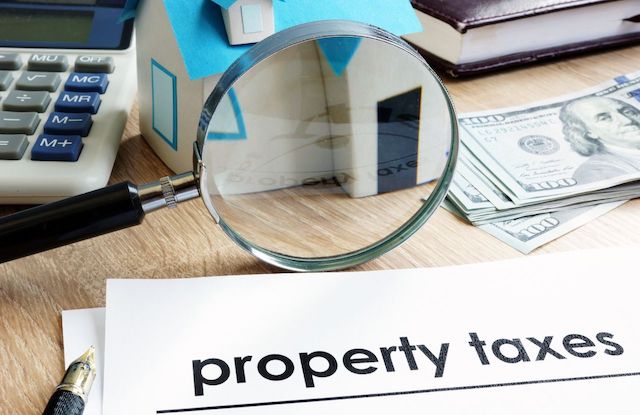Navigating the intricate maze of property taxes can be daunting, especially when you encounter terms like “non-ad valorem tax“. This lesser-known type of assessment is not based on your property’s value but on the specific services or benefits provided to it.
In this article, we’re going to demystify non-ad valorem taxes by breaking down their key aspects and implications for homeowners.
Curious? Let’s journey together into understanding this unique form of taxation!
THIS POST MAY CONTAIN AFFILIATE LINKS. PLEASE READ MY DISCLOSURE FOR MORE INFO. Which means if you click on any of the links, I’ll receive a small commission at no additional cost to you.
Understanding Non Ad Valorem Tax
Non-Ad Valorem Tax refers to charges or fees that cover specific services or benefits provided to a property, rather than being based on the value of the property.
Definition and Basics
Non-ad valorem assessments are charges or fees levied on properties for specific services or benefits. Unlike traditional property taxes, these assessments aren’t based on a property’s value but rather correspond to the level of service or benefit provided by the charging authority.
This means that two properties with vastly different market values could have similar non-ad valorem assessments if they receive equivalent services.
Examples of services covered by non-ad valorem assessments include waste collection and disposal, sewer and lighting services, fire protection, and ambulance support. The period for these assessments can vary and doesn’t always align with the calendar year.
These charges are typically paid in advance, contrasting ad-valorem taxes which are usually settled in arrears after an assessment period.
Differences between Ad Valorem and Non Ad Valorem Taxes
The key differences between ad valorem and non-ad valorem taxes can affect how you manage your property and financial responsibilities.
To clearly illustrate the main distinctions, let’s take a look at the following table:
| Ad Valorem Taxes | Non-Ad Valorem Taxes | |
|---|---|---|
| Definition | Charges or fees that cover costs associated with specific services or benefits provided to a property are not considered taxes. | Charges or fees that cover costs associated with specific services or benefits provided to a property are not considered as taxes. |
| Value Calculation | Based on property value and millage rate. | Based on project costs and benefits provided, not on property value. |
| Schedule of Payment | Paid in arrears, based on a calendar year from January 1st to December 30th. | Paid in advance, not on a calendar year basis. |
| Authorizing Body | Authorized by Article VII of the Florida Constitution and Chapters 192, 193, 194, 195, 196, 197, 200, and 201 of the Florida Statutes. | Authorized and regulated by state statute, following several provisions to ensure validity. |
| Services Included | N/A | Could include services like waste collection and disposal, sewer, lighting, fire protection, or ambulance services. |
By knowing the contrasts, you can better anticipate the kinds of costs associated with owning a property.
How Non Ad Valorem Tax is Applied?
Non-ad valorem tax is applied through the establishment of special taxing districts and property assessed clean energy (PACE) districts.
Special Taxing Districts
Special Taxing Districts are unique entities that play a crucial role in shaping public service delivery and infrastructure. They specifically cater to the need for improvements and services beyond what the county or municipality traditionally provides.
These districts utilize Non-Ad Valorem Assessments as their primary revenue source. The funds garnered from these assessments don’t rely on property value, but rather include costs incurred for specific services such as security, landscaping, lighting, and trash disposal.
Hence, the monetary implications of these non-ad valorem assessments cause a substantial impact on property tax bills. Every potential real estate buyer should consider this while making purchases since these costs can significantly affect their overall investment.
Property Assessed Clean Energy (PACE) Districts
Property Assessed Clean Energy (PACE) Districts are an innovative financing option for property owners looking to make energy improvements.
PACE programs allow homeowners and businesses to borrow money for projects like solar panels, energy-efficient heating and cooling systems, and hurricane impact windows.
The unique aspect of PACE financing is that the loan is repaid through a non-ad valorem assessment on the property tax bill. This means that property owners can make these energy upgrades without having to pay all the costs upfront.
Additionally, PACE assessments can be transferred to new property owners if the home or building is sold, ensuring that the benefits of these improvements continue even after ownership changes hands.
Benefits of Non Ad Valorem Tax
Non-Ad Valorem Tax offers flexibility in fund allocation and advantages for solid waste management systems.
Flexibility in Fund Allocation
Non-ad valorem taxes offer flexibility in fund allocation, allowing for targeted investments in specific services or benefits provided to a property.
Unlike ad valorem taxes that are based on property value, non-ad valorem assessments are determined by the levying authority and can be tailored to meet the needs of a community.
This means that funds from these assessments can be directed toward areas such as solid waste management systems, infrastructure improvements, energy efficiency initiatives, and more.
The ability to allocate funds according to specific priorities helps ensure that resources are used efficiently and effectively to benefit both property owners and the community as a whole.
Advantages of Solid Waste Management Systems
Non-ad valorem assessments offer several advantages for solid waste management systems:
- Flexibility in Funding Allocation: Non-ad valorem assessments allow for more flexibility in allocating funds for solid waste management. This means that the revenue generated can be specifically used to address the needs and requirements of the system, such as upgrading equipment, improving infrastructure, or implementing new technologies.
- Adequate Funding: With non-ad valorem assessments, solid waste management systems can ensure a steady and reliable source of funding. This allows for better planning and budgeting, ensuring that necessary services are provided efficiently and effectively.
- Equitable Distribution of Costs: Non-ad valorem assessments distribute the costs of solid waste management more equitably among property owners. Instead of relying solely on property values, these assessments take into account the specific benefits received by each property. This ensures that property owners pay their fair share based on their usage and impact on the system.
- Enhances Sustainability Efforts: The additional funding from non-ad valorem assessments can be used to invest in sustainability initiatives within the solid waste management system. This may include implementing recycling programs, promoting composting techniques, or adopting renewable energy practices. These efforts contribute to a more environmentally friendly and sustainable waste management system.
- Improved Service Quality: By providing stable funding, non-ad valorem assessments enable solid waste management systems to enhance service quality. Funds can be allocated towards hiring and training qualified staff, maintaining equipment and vehicles, and implementing efficient collection processes. As a result, residents benefit from improved waste management services that are reliable and timely.
- Encourages Innovation: With dedicated funding sources through non-ad valorem assessments, solid waste management systems can invest in research and development to explore innovative approaches to waste reduction and disposal. This promotes technological advancements that can lead to more efficient and sustainable waste management practices.
- Long-Term Financing Options: Non-ad valorem assessments offer the opportunity for long-term financing options for solid waste management systems. This allows for the implementation of large-scale projects, such as constructing new recycling facilities or upgrading waste treatment plants, without straining the system’s budget.
Real World Implications of Non Ad Valorem Tax
Non-ad valorem tax has real-world implications for property owners. One significant implication is that it can significantly impact property tax bills. Unlike ad valorem taxes, which are based on the value of the property, non-ad valorem assessments are not tied to the property’s value.
Instead, these assessments cover specific services or benefits provided to a property, such as landscaping, security services, lighting, and trash disposal.
Another implication is that non-ad valorem assessments are assigned directly to the benefiting property rather than being spread across all properties in a taxing district. This means that if your property receives certain services or benefits covered by non-ad valorem taxes, you will be responsible for paying those charges.
It’s important to note that community development districts (CDDs) and special taxing districts play a role in implementing non-ad valorem taxes. CDDs manage and finance infrastructure in housing developments through these assessments.
Special taxing districts provide additional public improvements and services beyond what is typically offered by the county or municipality.
Overall, understanding how non-ad valorem tax works can help property owners better grasp their financial responsibilities and make informed decisions when purchasing real estate.
FAQs
1. What is a Non Ad Valorem Tax?
A non ad valorem tax is a type of tax that is not based on the value of property or goods, but rather on fixed amounts or other factors unrelated to the value.
2. How Does a Non Ad Valorem Tax Differ from an Ad Valorem Tax?
Unlike an ad valorem tax, which is calculated based on the assessed value of property or goods, a non-ad valorem tax is typically flat-rate or calculated based on criteria such as square footage, number of units, or specific activities related to the taxed item.
3. What Are Some Examples of Non Ad Valorem Taxes?
Examples of non-ad valorem taxes include special assessments for public improvements like sewer system upgrades, fire and emergency services fees, solid waste management charges, and stormwater utility fees.
4. Why Are Non Ad Valorem Taxes Used?
Non-ad valorem taxes are often used when there is a need to fund specific services or infrastructure projects that benefit certain properties or individuals within a jurisdiction.
They provide a more equitable way to distribute costs among taxpayers by tying them directly to the use or impact of the service being funded.
Final Thoughts
Non-ad valorem taxes are charges or fees that cover specific services or benefits provided to a property. Unlike ad valorem taxes, these assessments are not based on the value of the property but on a unit of measure determined by the levying authority.
Non-ad valorem assessments provide flexibility in fund allocation and offer advantages for solid waste management systems, making them an important aspect of property taxation in many regions.
Disclaimer Statement: All data and information provided on this site is for informational purposes only. The Handy Tax Guy makes no absolute representation of the correctness, mistakes, omissions, delays, appropriateness, or legitimacy of any information on this site. **Note: Each client circumstance will vary on a case-by-case basis**









